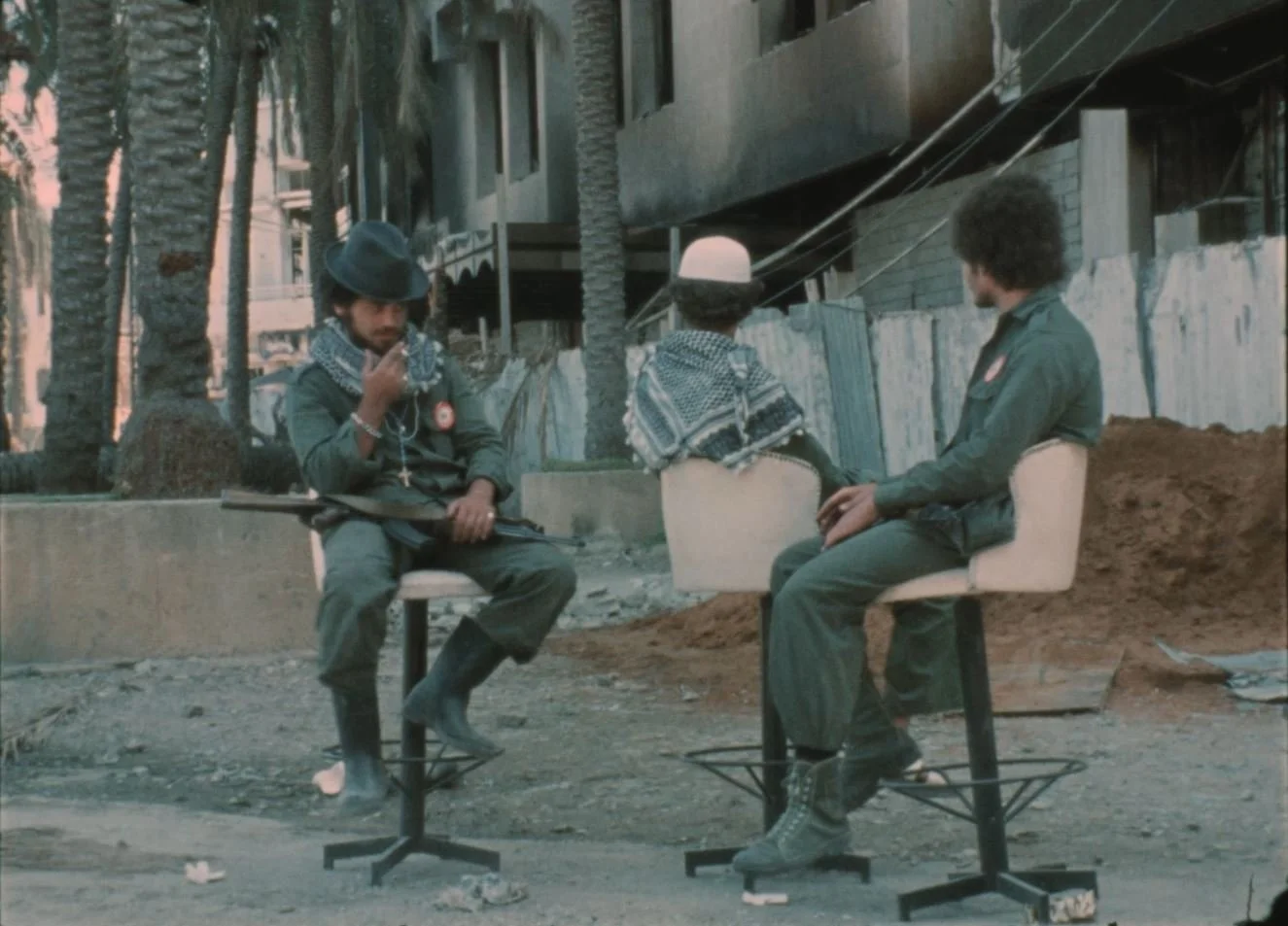The Beirut Trilogy by Jocelyne Saab: Film Review
A strange thing happens as you watch the Beirut Trilogy — three short documentaries filmed during the Lebanese Civil War (1975-1990) by the director Jocelyne Saab. You know that what you’re watching happened in the past. The grainy 16mm footage alone makes that clear, as does the focus of Saab’s camera: small objects in the rubble of the destroyed city that the voiceover narration calls “points of reference for memory.” Jukeboxes, typewriters, Geisha paintings, a sign shaped like Mickey Mouse. But then you hear air raids over the city. You see injured Palestinian children crowded together in a hospital room. Time dissolves altogether and you don’t know if you’re in Beirut in 1976 or Gaza in 2024. You’re just there with the images before you.
Still from Beirut, Never Again (1976)
Heavily-edited versions of these three documentaries — Beirut, Never Again (1976); Letter from Beirut (1978); and Beirut, My City (1982) — were originally broadcast on French television. The Jocelyne Saab Association, which formed in 2019 in the wake of the director’s death at the age of 70, has since restored and digitized them to their original cuts, along with twelve of Saab’s documentaries. In the last five years, they have regularly held training workshops for aspiring film technicians in Beirut, hoping to expand the availability of archive services in the rest of the Arab world. It’s the kind of on-the-ground work that allows film as a medium to maintain its history.
When the Lebanese Civil War broke out, Saab was a war reporter based in Paris. She returned to her home city and walked the streets with her camera every morning from six to ten. The resulting footage became Beirut, Never Again. In a later interview, she said that “Life in Beirut is surrealistic,” and the images she captures prove it. A man on a bike with a basket of market vegetables in one hand and an AK-47 in the other; armed commandos grouped together, sleeping, in swivel chairs on the street; the oldest bar in Beirut, which remains crowded with people smoking hookah and laughing against the ocean in spite of the destruction around them.
All three films are dominated by flowing French-language voiceovers. In Beirut, Never Again and Letter from Beirut, they are written by renowned Lebanese poet Etel Adnan; in Beirut, My City, it is written by the playwright Roger Assaf. These narrations rarely provide factual or political context but function more as run-on poems, as if the observer’s subconscious is attempting to make sense of the images before them.
Still from Letter from Beirut (1978)
You wish that there was both more and less of it. In a sense, the three films feel made for viewers who’d been following the Civil War in the news at the time. You might feel a bit lost without a similar level of familiarity. After the creation of the State of Israel in 1948, thousands of Palestinian refugees settled into camps in southern Lebanon, which became the hub of the armed resistance led by Yasser Arafat. In Letter from Beirut, we are shown remarkably intimate footage of Arafat at a refugee camp. He delivers a rousing speech to guerrillas in one scene and plays with children in a field in the next. We see plastic flowers dispersed in a Palestinian cemetery, Palestinian women carrying dough on their heads for bread. Saab regularly gives empathetic attention to Palestinians in Lebanon but keeps her observations largely in the present tense. We don’t get a clear understanding of how the refugees were vilified in that country, both blamed for attracting Israeli antagonism and seen as a threat to the country’s Christian Maronites. Without that context, we might miss the reason and meaning behind Saab’s compassionate eye towards this population.
And we might have trouble losing ourselves in the films’ remarkable imagery. While the language of the narration is lovely, at times it feels overwhelming. You wish it would quiet down and allow the images to speak for themselves, as happens at the beginning of Beirut, My City. The director stands before the camera in front of a destroyed home. She explains that it had been in her family for over 150 years and was destroyed by the Israeli Army’s 1982 bombardment of the city. After this short introduction, we watch her pass through the silence and the space of this now-ended family heirloom. Nothing more needs to be said.
Still from Beirut, My City (1982)
It is difficult to find a purer form of documentary than the Beirut Trilogy, which fulfills exactly the promise of the medium’s name. The three films document glimpses of the life of a cosmopolitan city – once known as “the Paris of the Middle East” – in one of its most trying periods, offering a window for posterity into that particular moment in time. The magic happens when the past strips away altogether. Time becomes irrelevant and you are present in the city.
I will never forget a scene in Beirut, My City in which Saab films an old man tending to a garden in an abandoned street while military jets fly directly overhead. As he waters the plants, he explains with pride that the “garden was full of garbage. I fixed it.” He throws his hand up in a gesture made by old men everywhere, in every time and place, who know the weight of the world and how to throw it off.
“The bombs are up there,” he says. “We are still here.”


